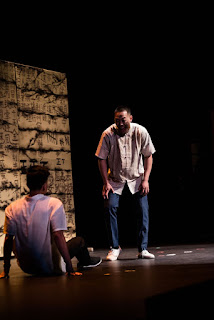This week's lesson showed me that mathematics was and continues to be integral to the development of art. Having taken an art history class before in the past, I was familiar with the tendency of artists to utilize geometry in art. Notably, Brunelleschi utilized the vanishing point rule, a rule that many artists subsequently adopted, in order to maximize depth in paintings. Additionally, Henderson talked about how artists have strived to add as much realism and depth into their artwork as possible, evident by their efforts to incorporate the 4th dimension through shadows and virtually constructed images, amongst other artistic tools.

As explained in lecture, another mathematically integrated concept was the Golden Ratio, which was critical in the development of aesthetics in art and architecture. Dr. Vesna spoke specifically of Leonardo da Vinci's Vitruvian man, who is based upon what is supposedly the ideal and optimal physiological proportions and shown relative to the geometry of the space that the man is posited in. The hunt for ideal proportions, both physiologically and compositionally relative to an amount of space is prevalent in the aesthetic concepts of modern photography. There are "rules" to which human subjects' body parts should abide to in order for shots to be optimally natural and pleasing to the eye. The "rule of thirds" is one such example.
https://www.goldennumber.net/wp-content/uploads/Vitruvian-Man-Fractional-Measure-Method.jpg
Despite the distinctively perceived differences between art and math, art being characterized as creative and fluid and math being characterized in diametric opposition as rigid, logical, and by the rules, math is integrated often times to bring out the best in art. Sometimes math is utilized to optimize the appearance of artwork, while other times it is utilized in music to push the conventional rhythm of pieces and move into newer, groundbreaking arenas.
Works Cited
Glydon, Natasha. "The Mathematics of Art." The Mathematics of Art - Math Central. Web. 17 Apr. 2017
Henderson, Linda Dalrymple. "The Fourth Dimension and Non-Euclidean Geometry in Modern Art: Conclusion." Leonardo, Vol. 17, No. 3. (1984), pp. 205-210.
Lang, Robert. Robert Lang: The math and magic of origami | TED Talk | TED.com. TED, Feb. 2008. Web. 16 Apr. 2017.
Ouellette, Jennifer. "Pollock's Fractals." Discover 1 Nov. 2001: n. pag. Discover. Kalmbach Publishing Co., 1 Nov. 2001. Web. 16 Apr. 2017.
Vesna, Victoria.
Mathematics-pt1-ZeroPerspectiveGoldenMean.mov. Online video clip. YouTube. YouTube, 9 Apr. 2012. Web. 16 Apr. 2017.





Comments
Post a Comment